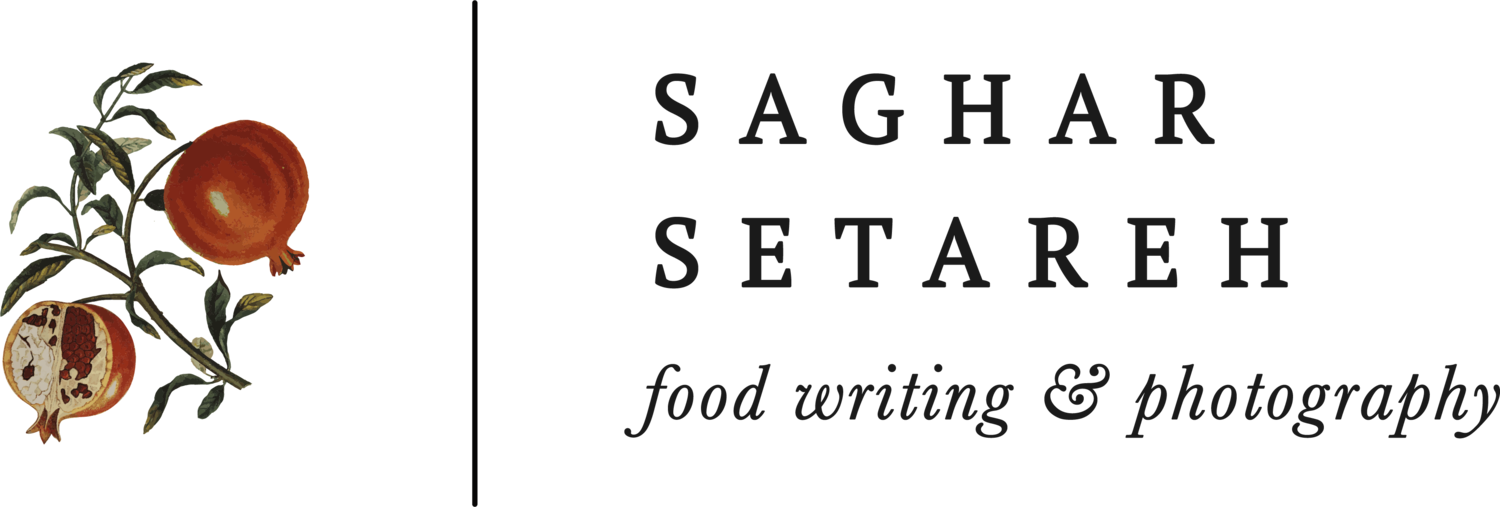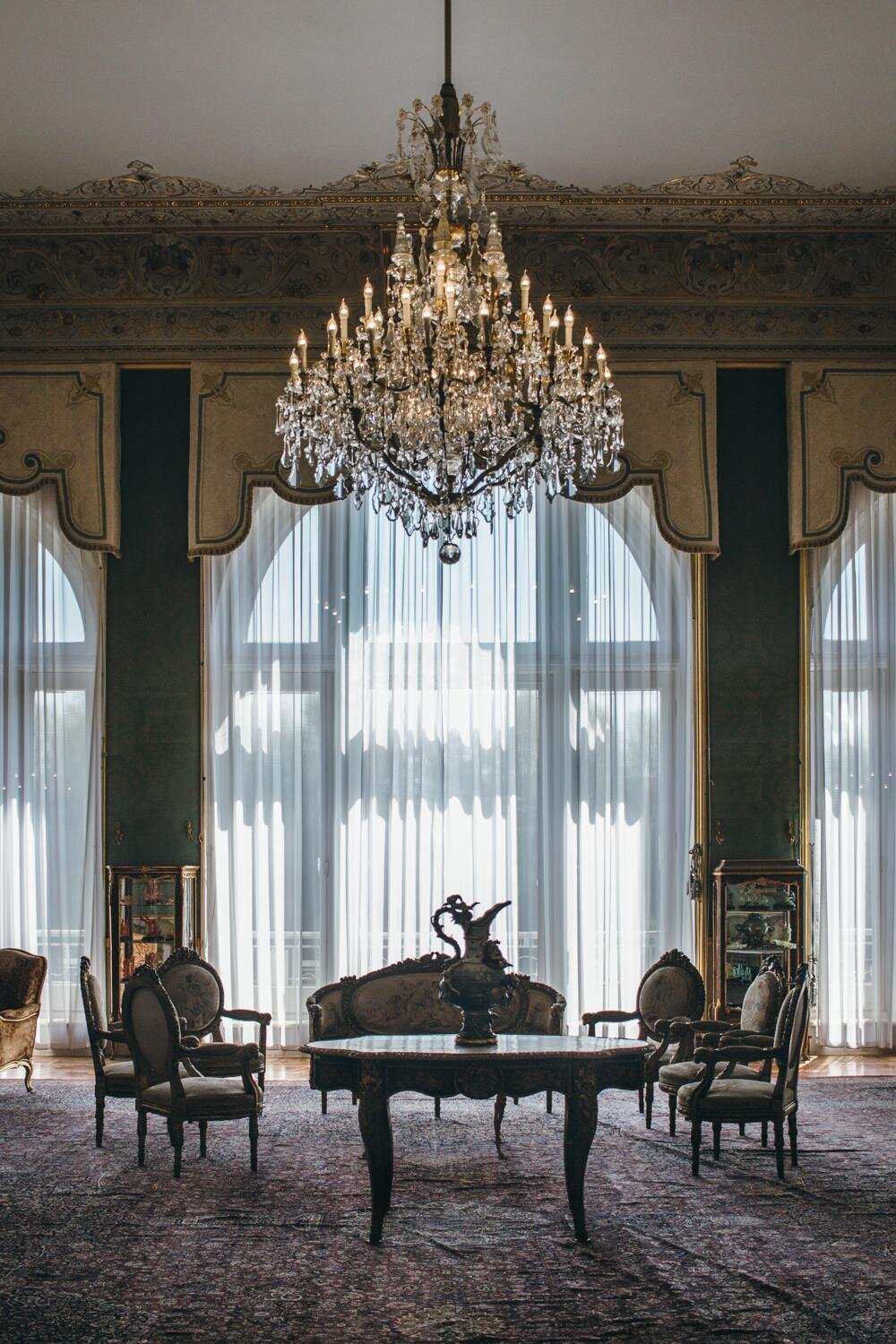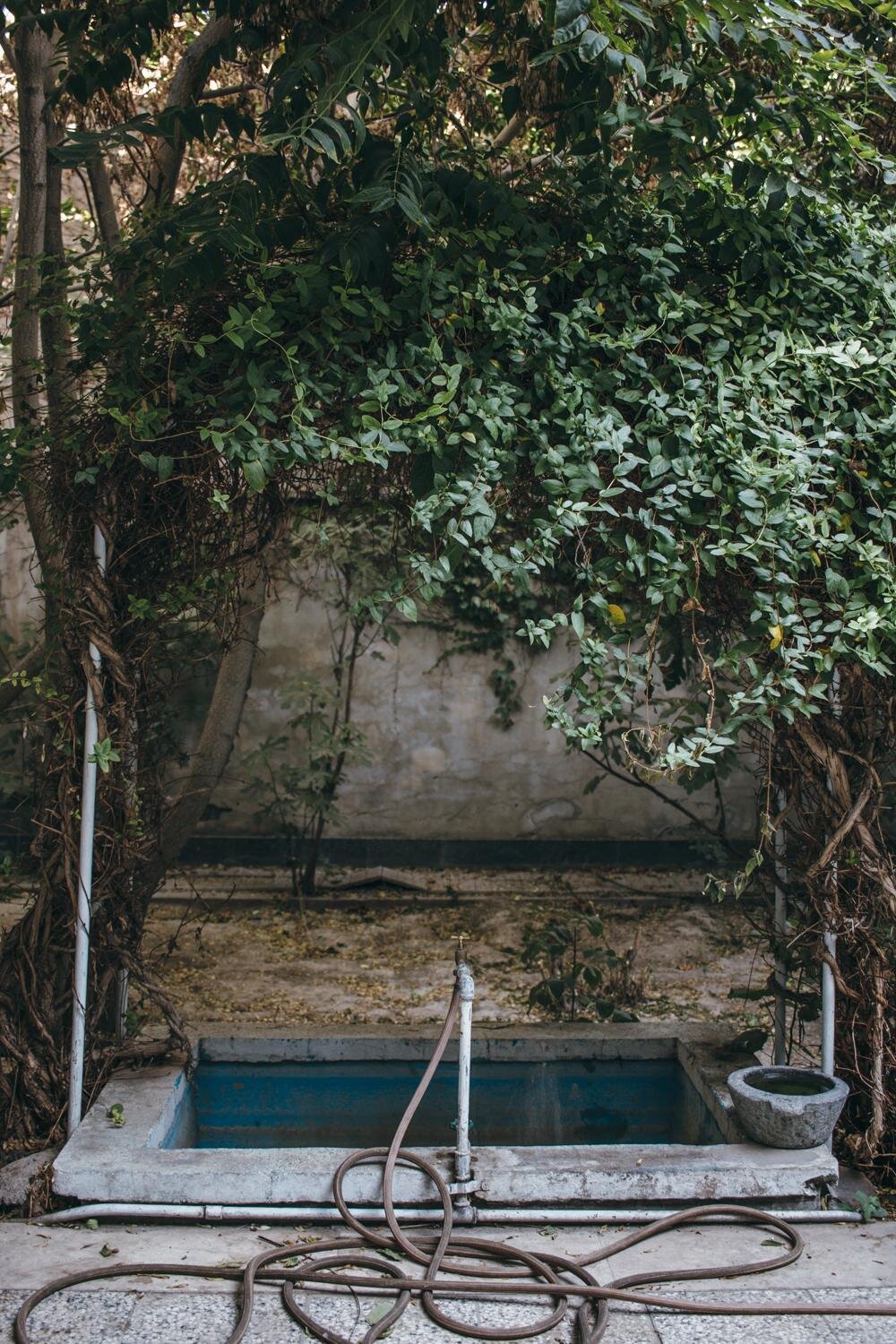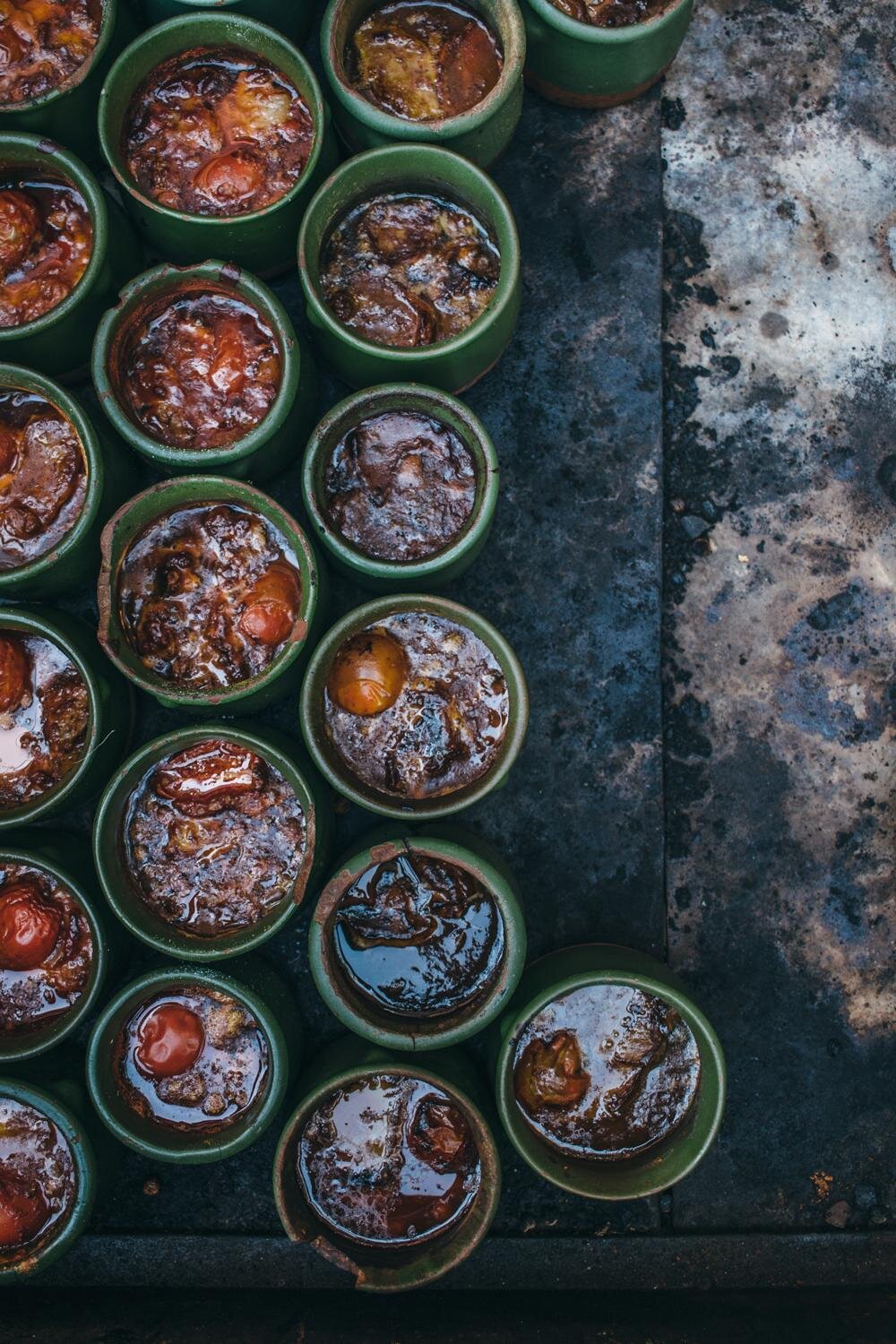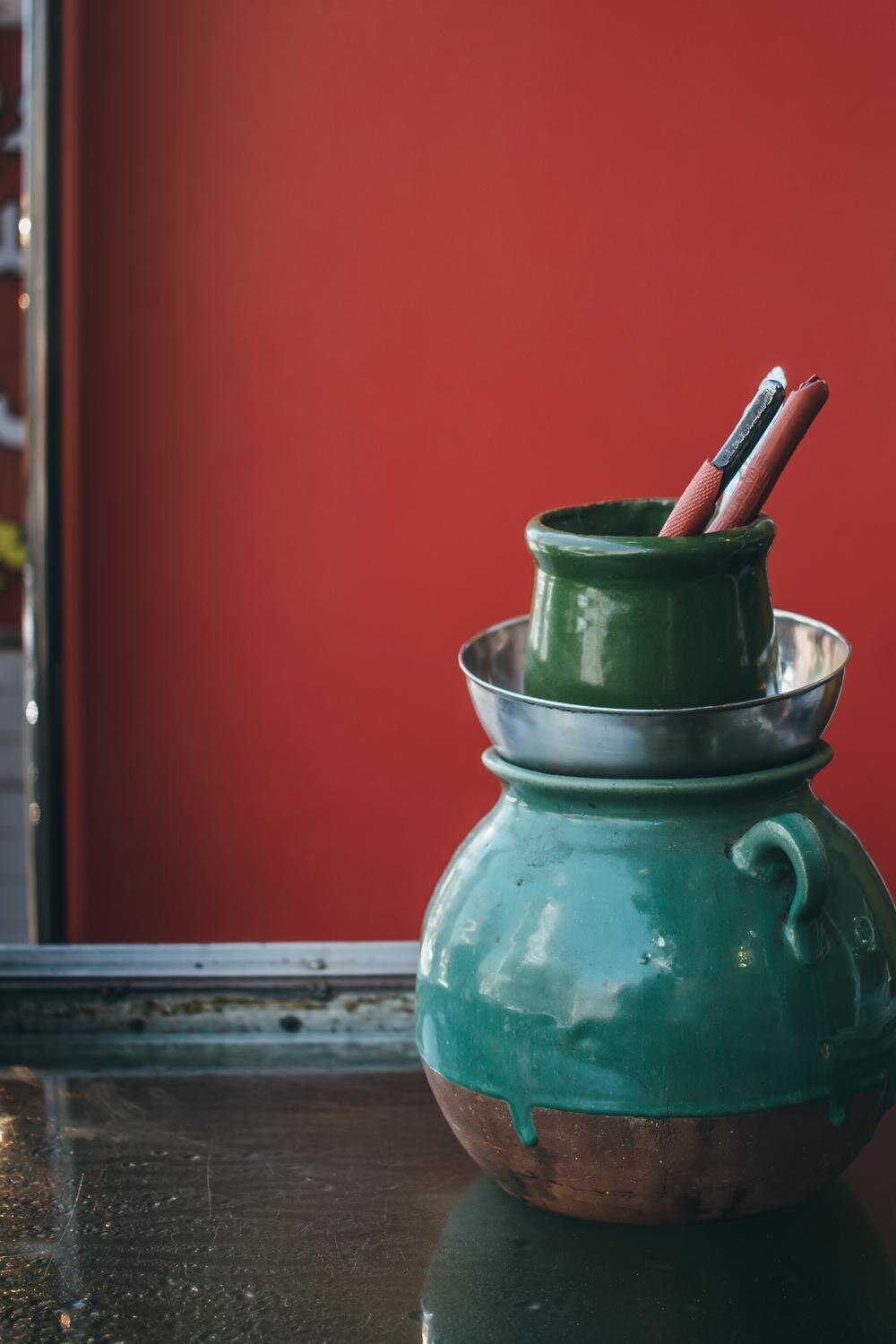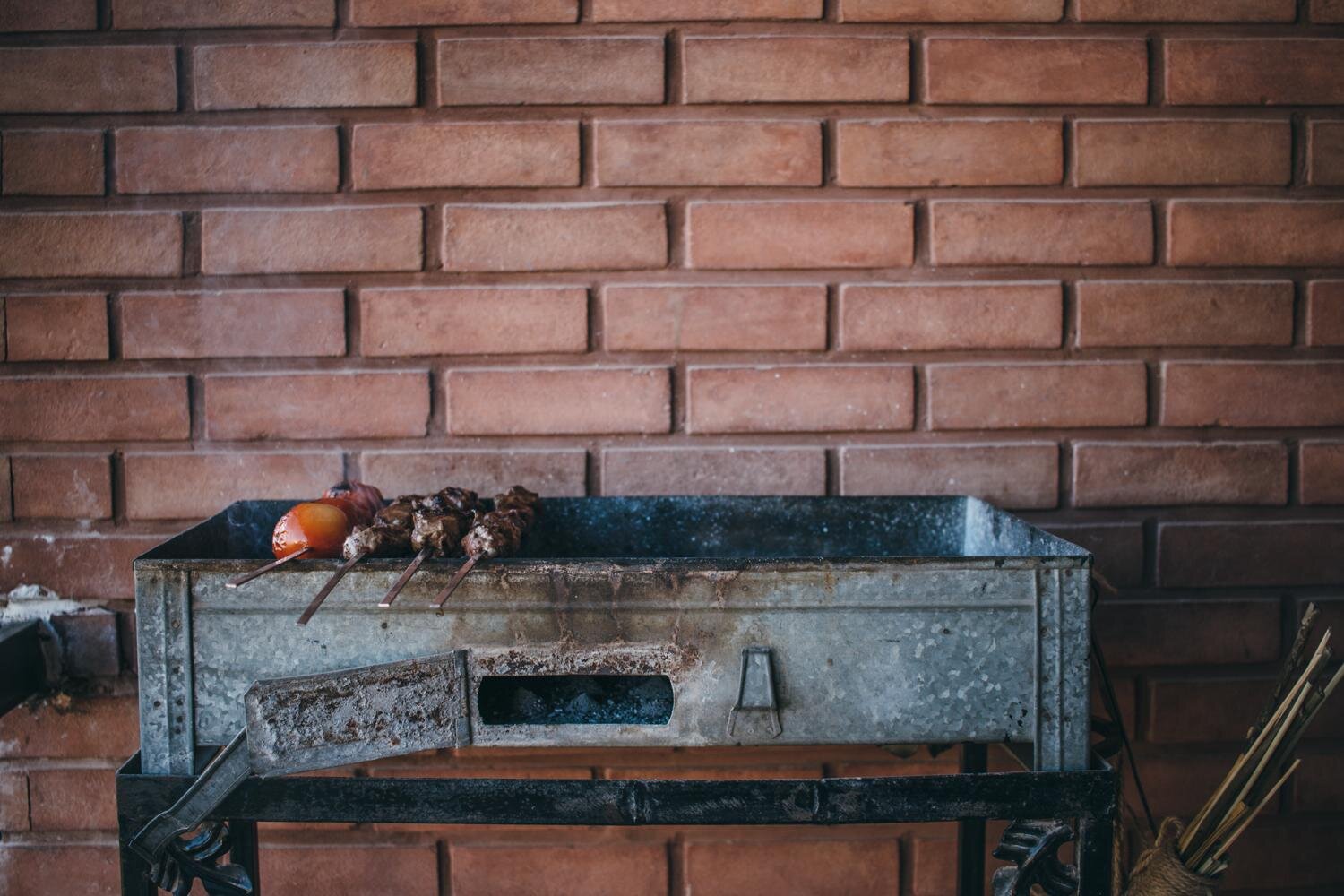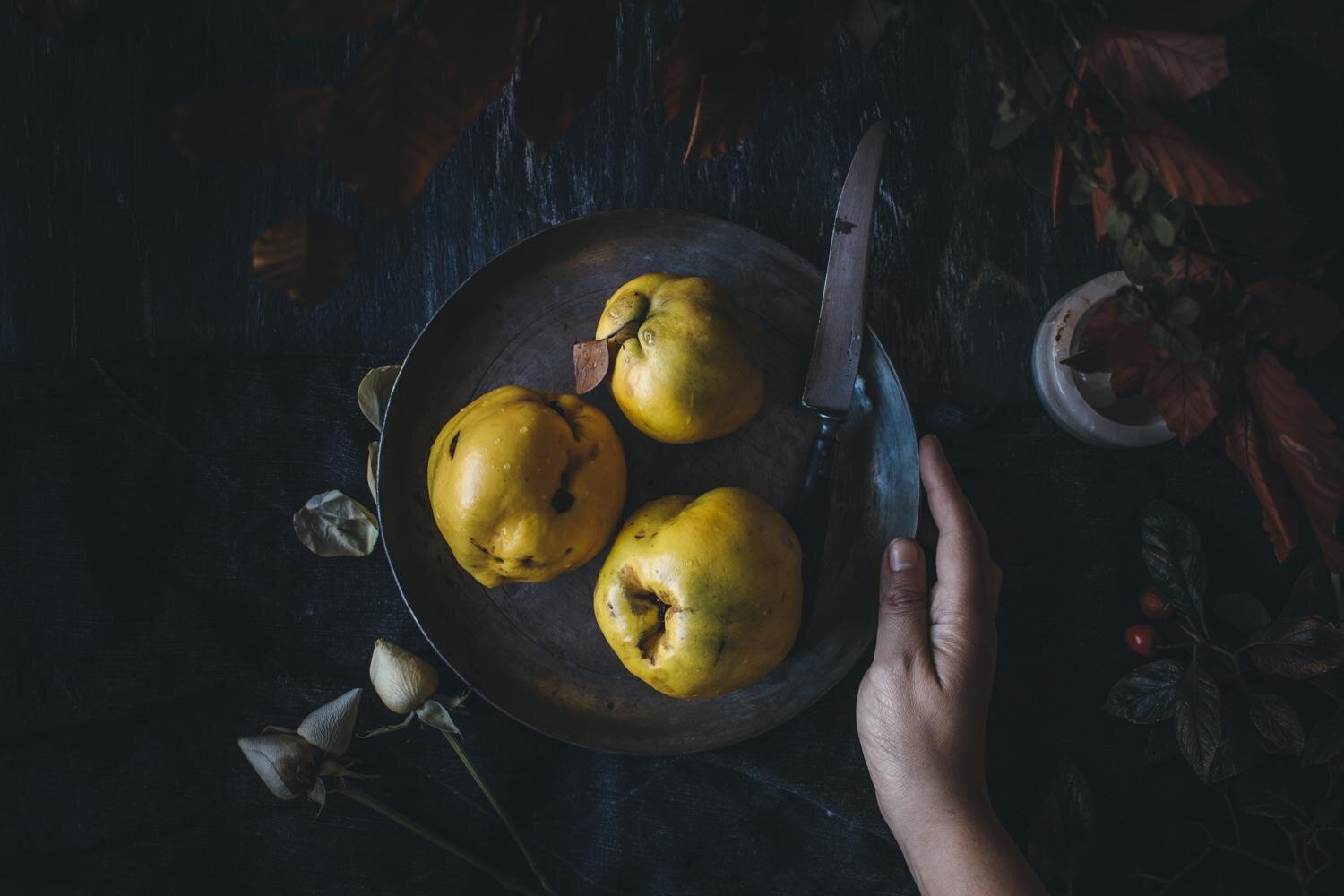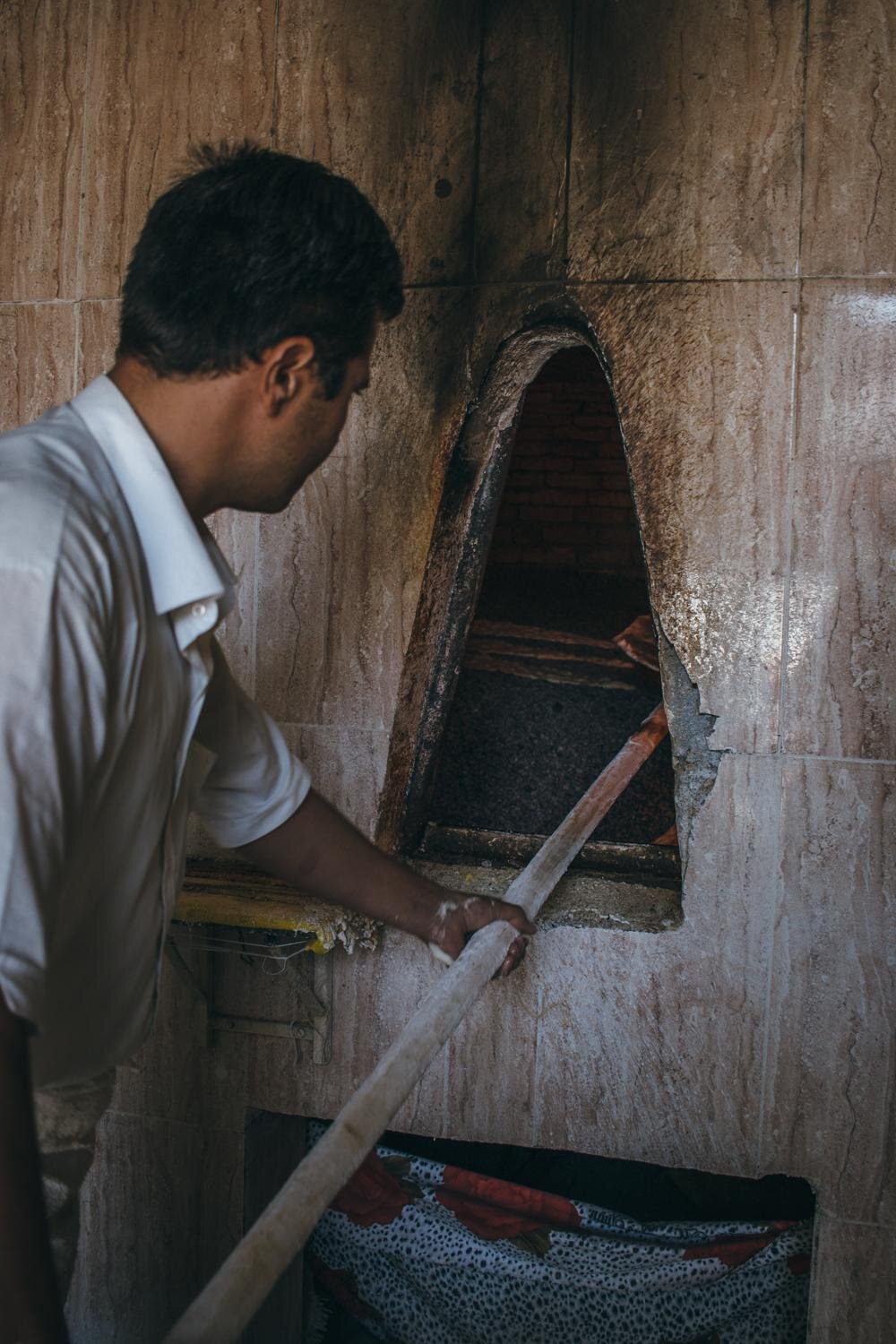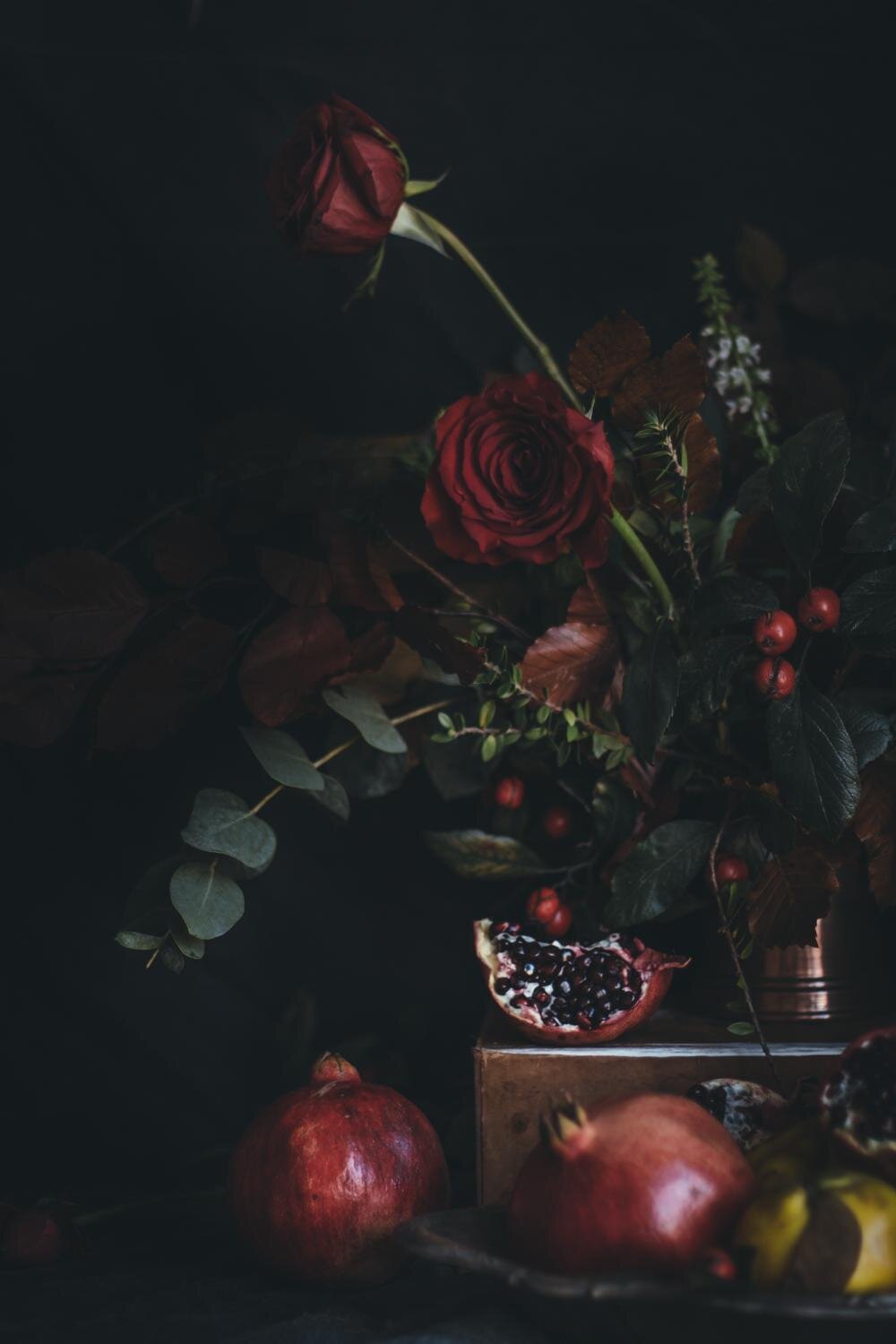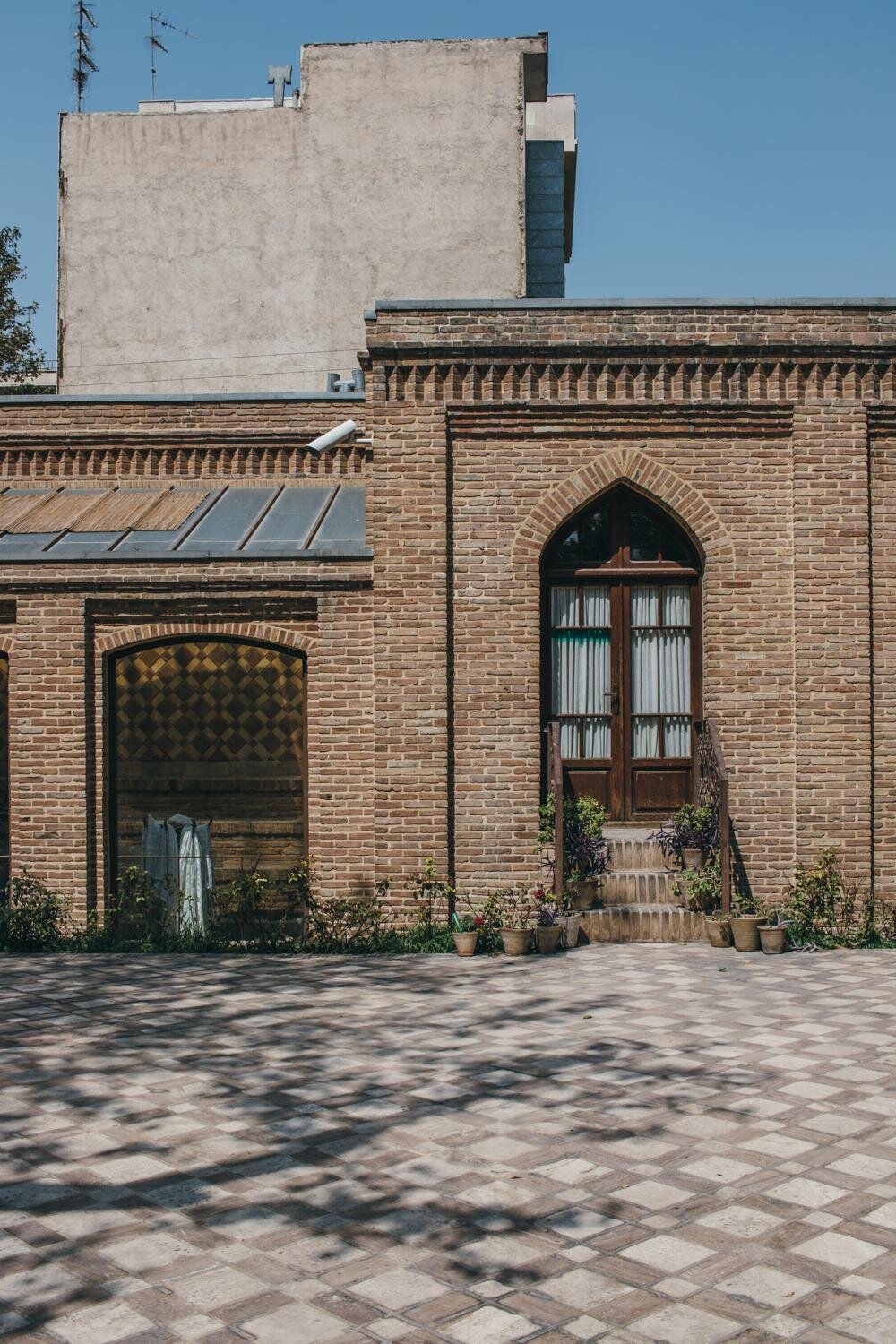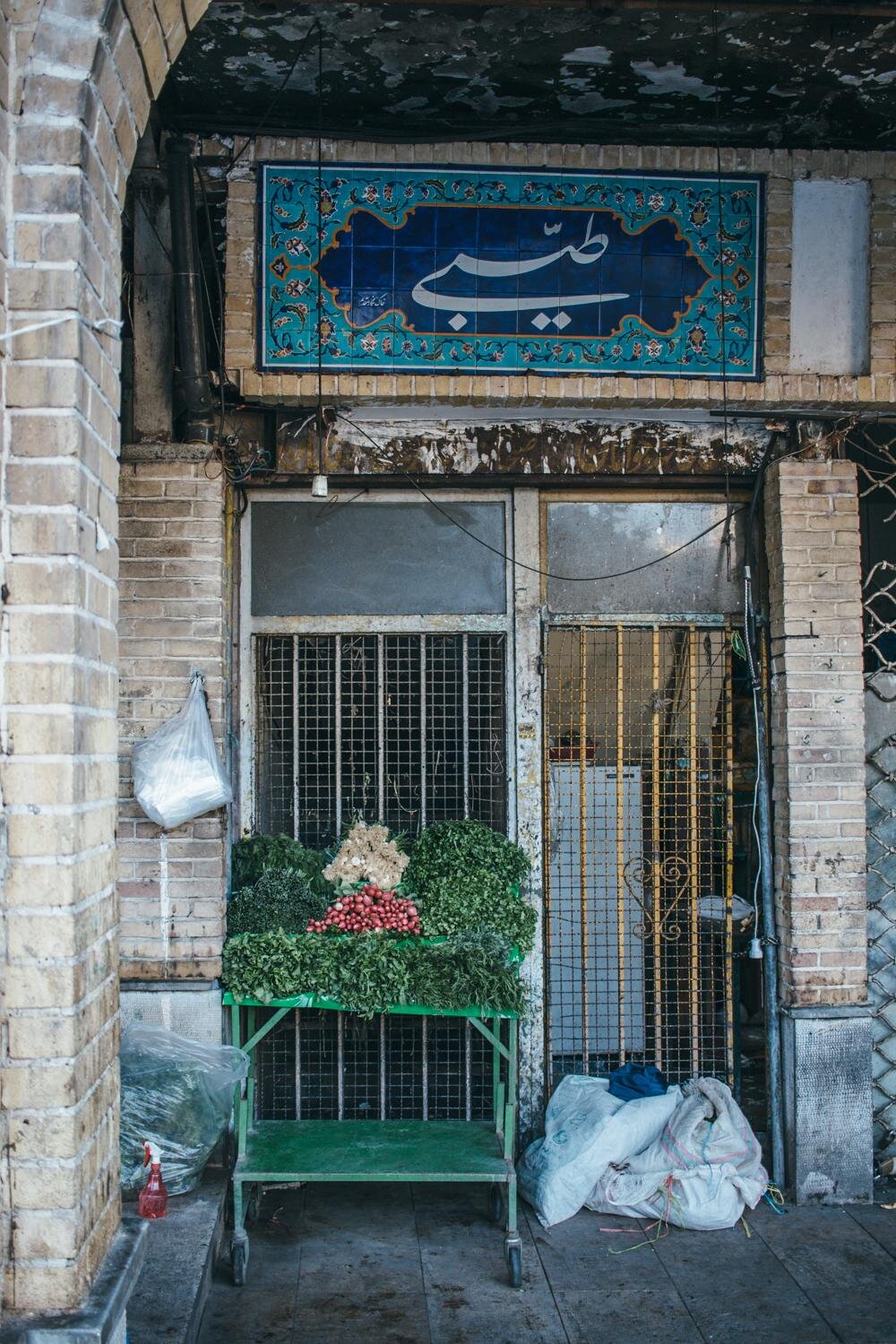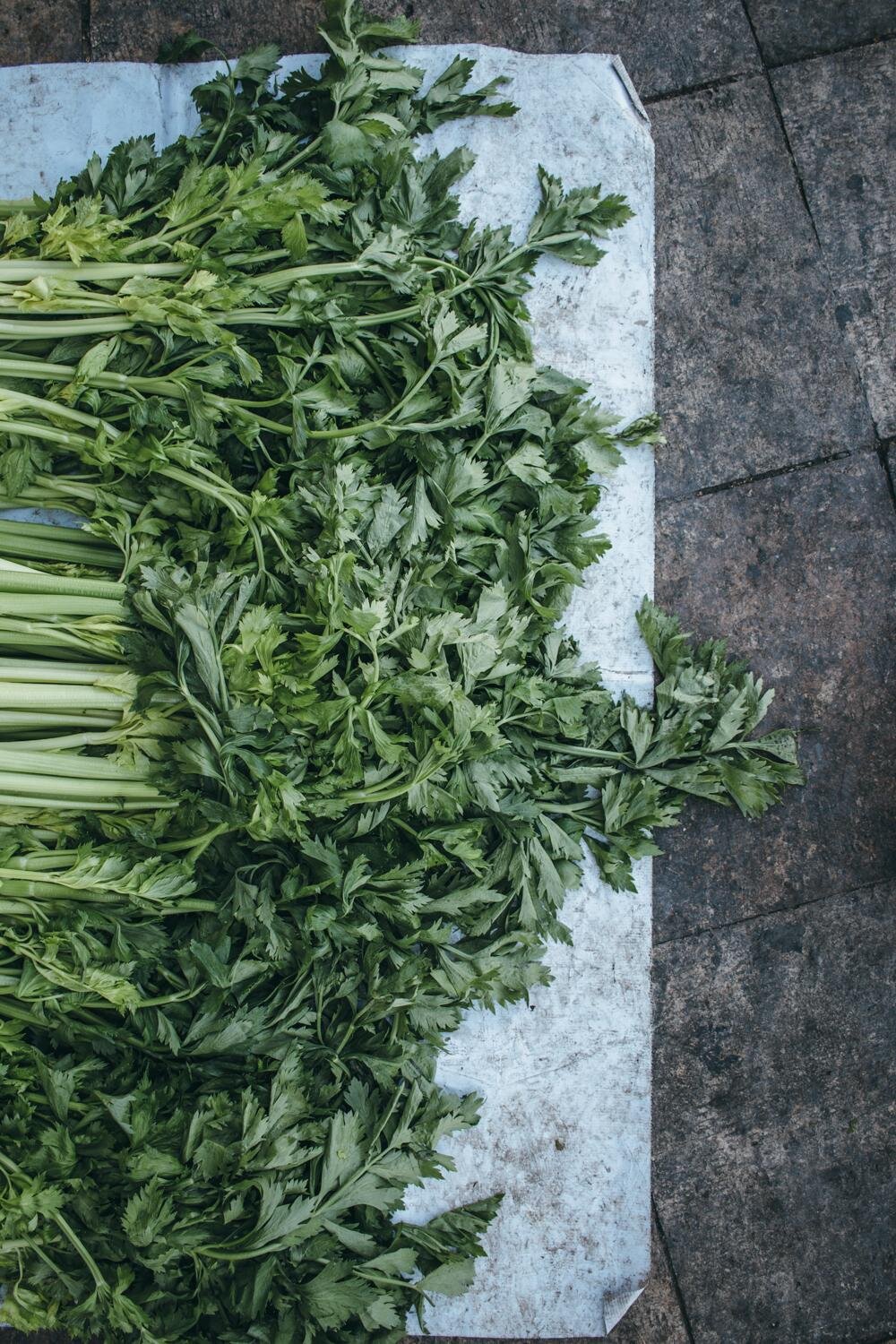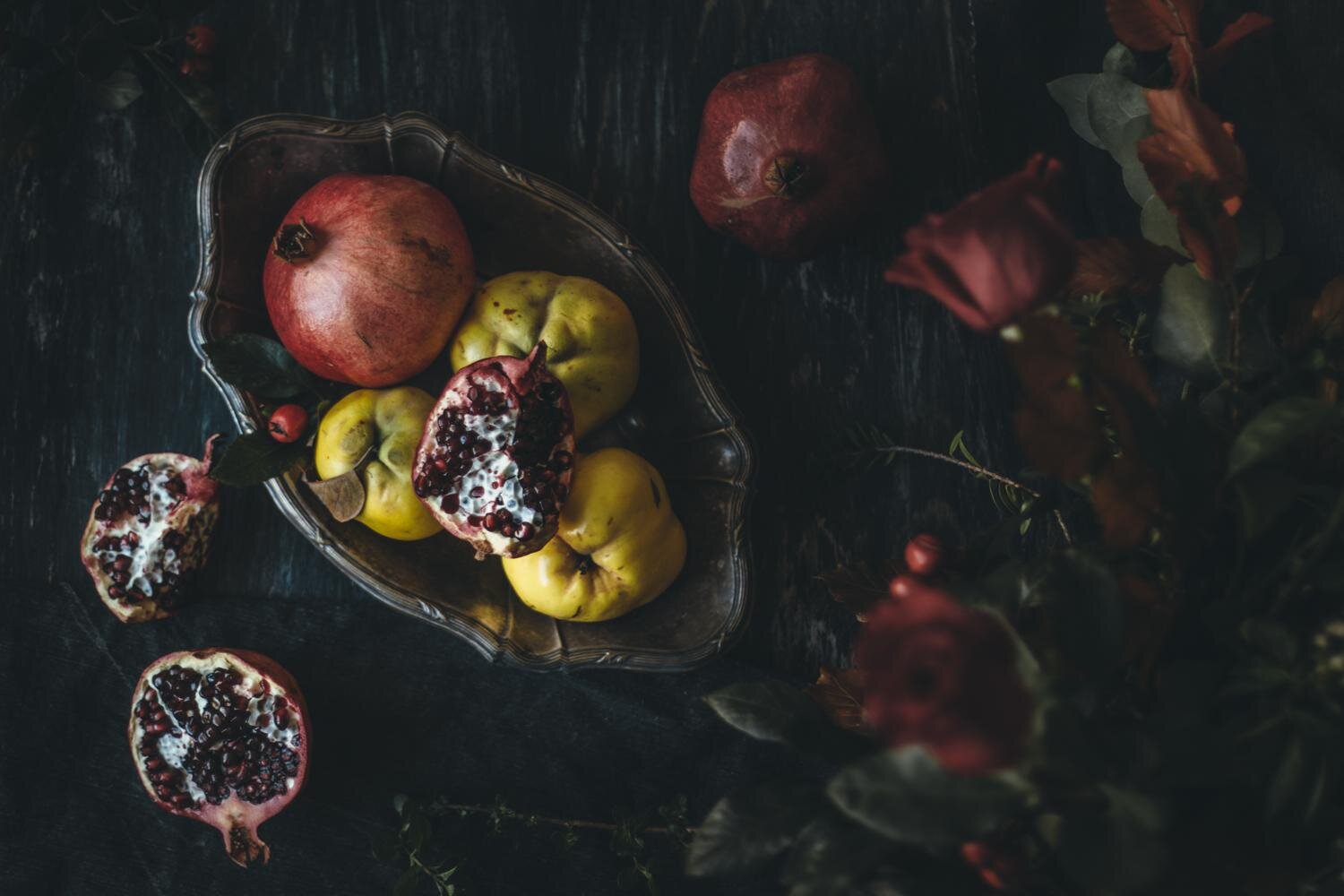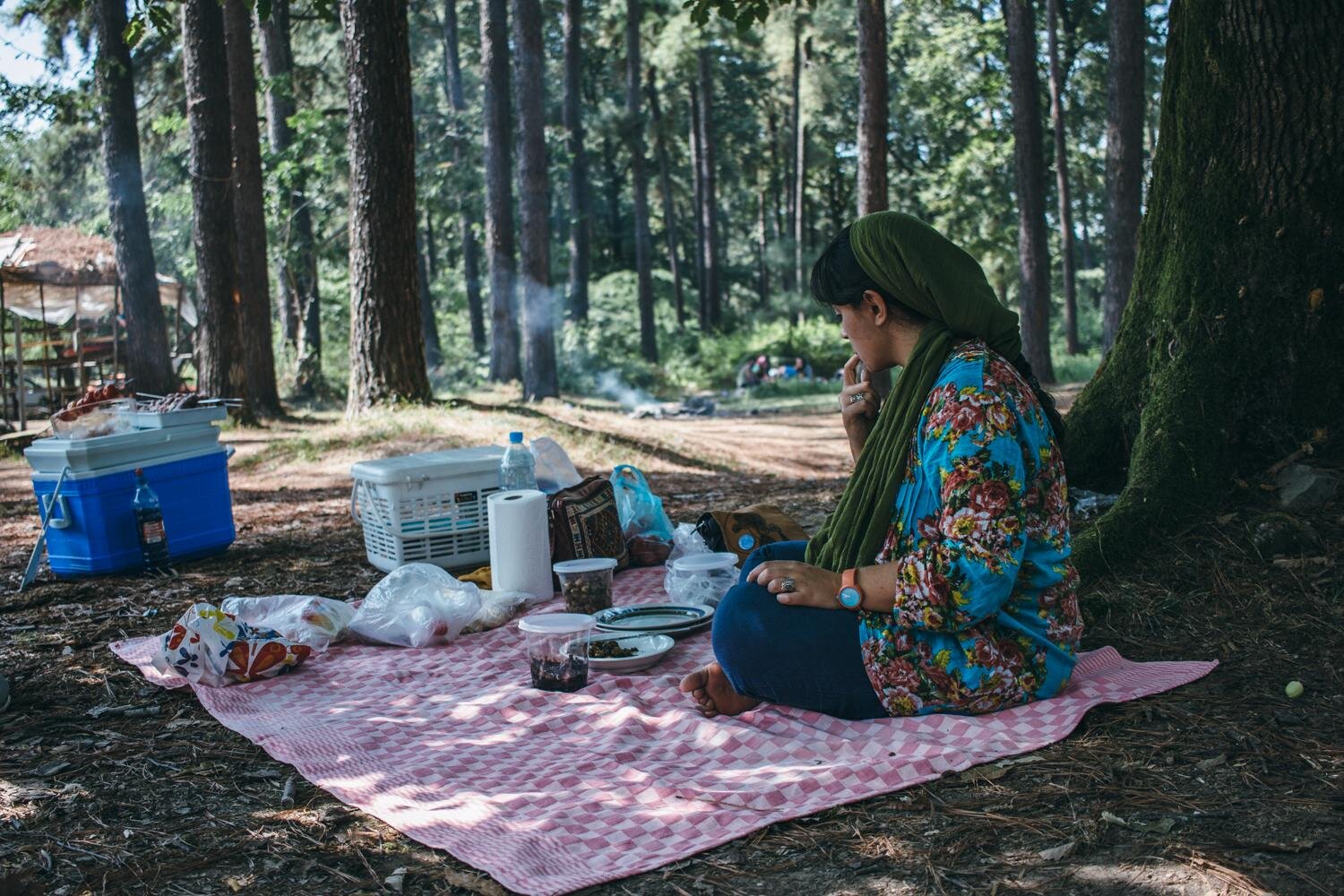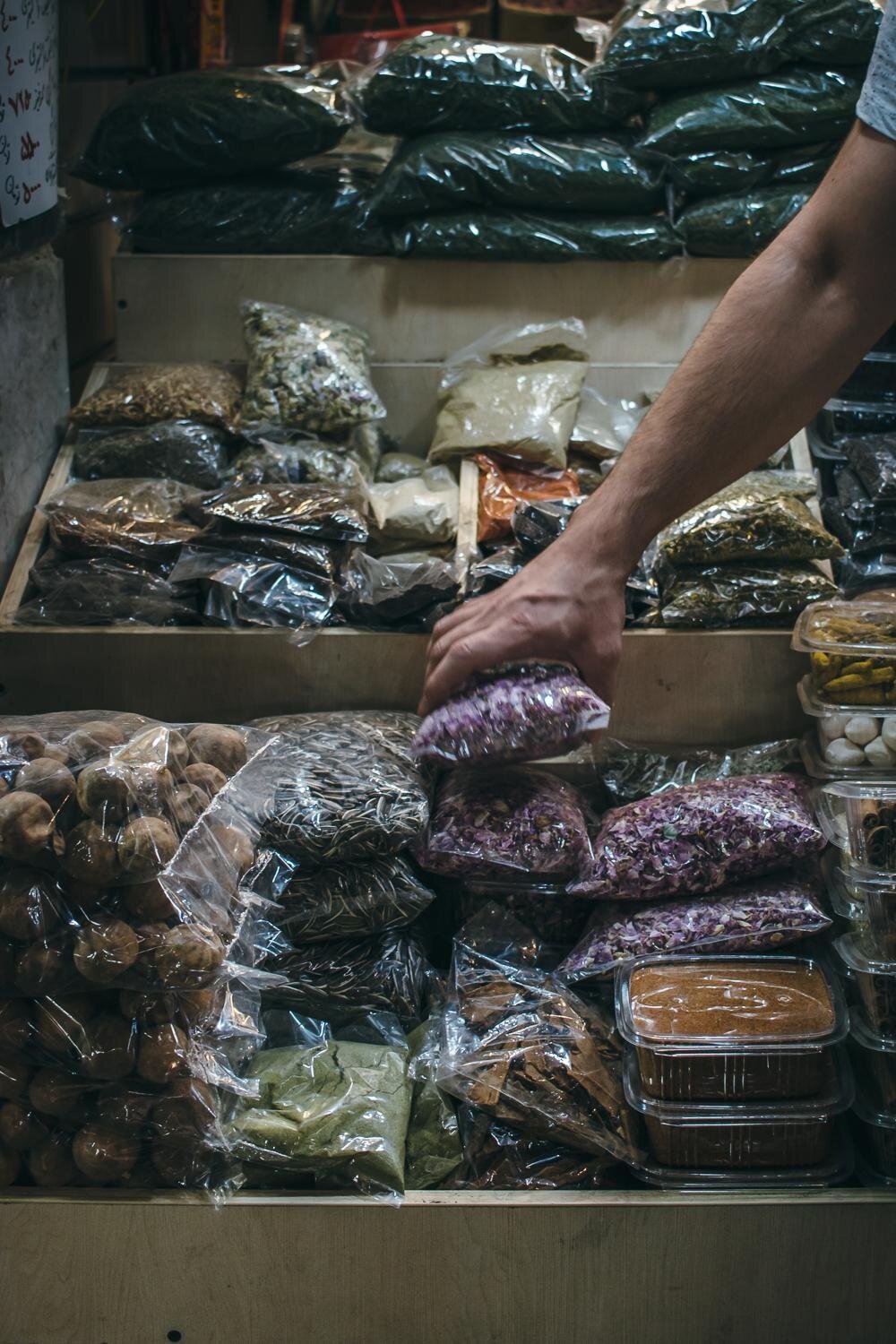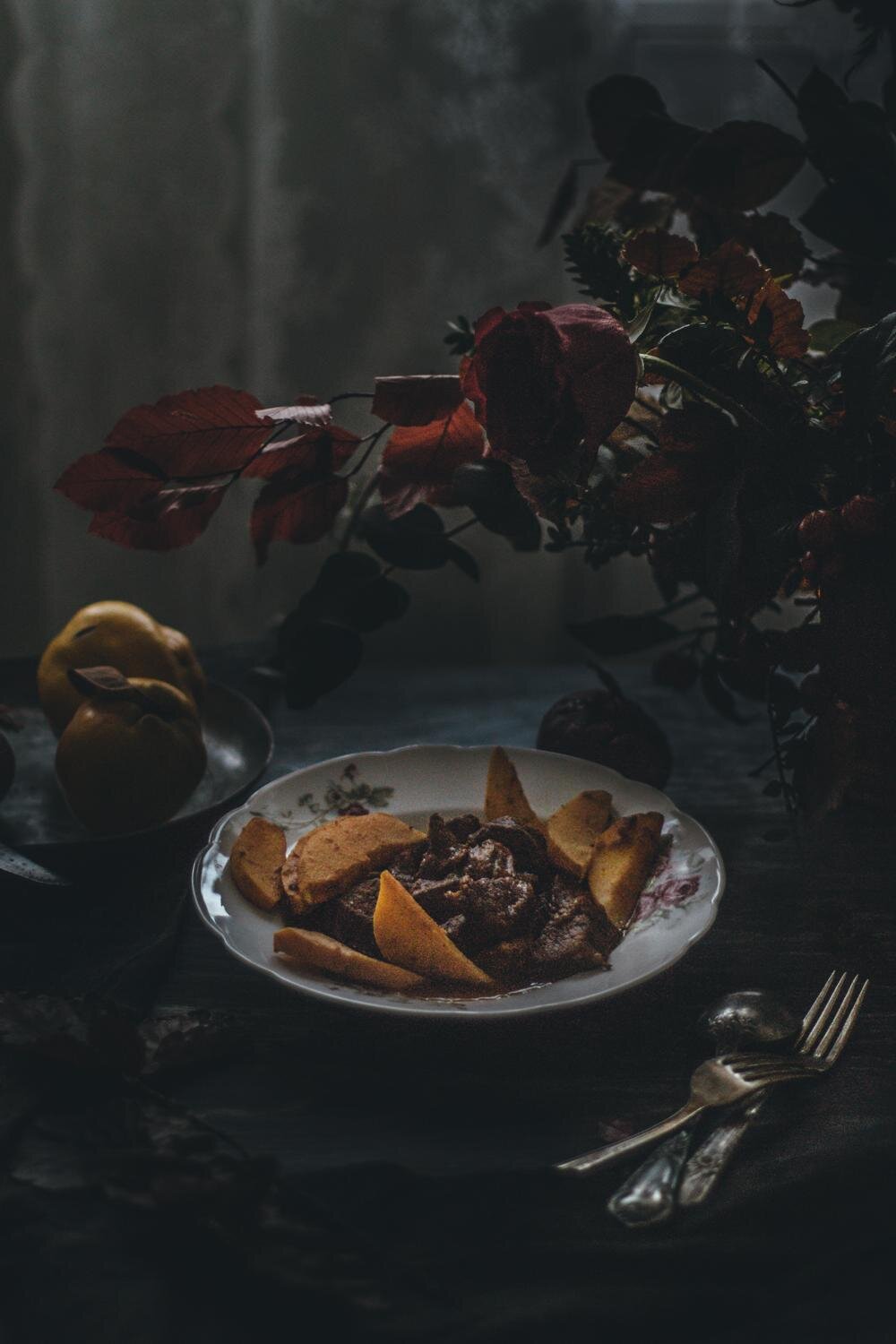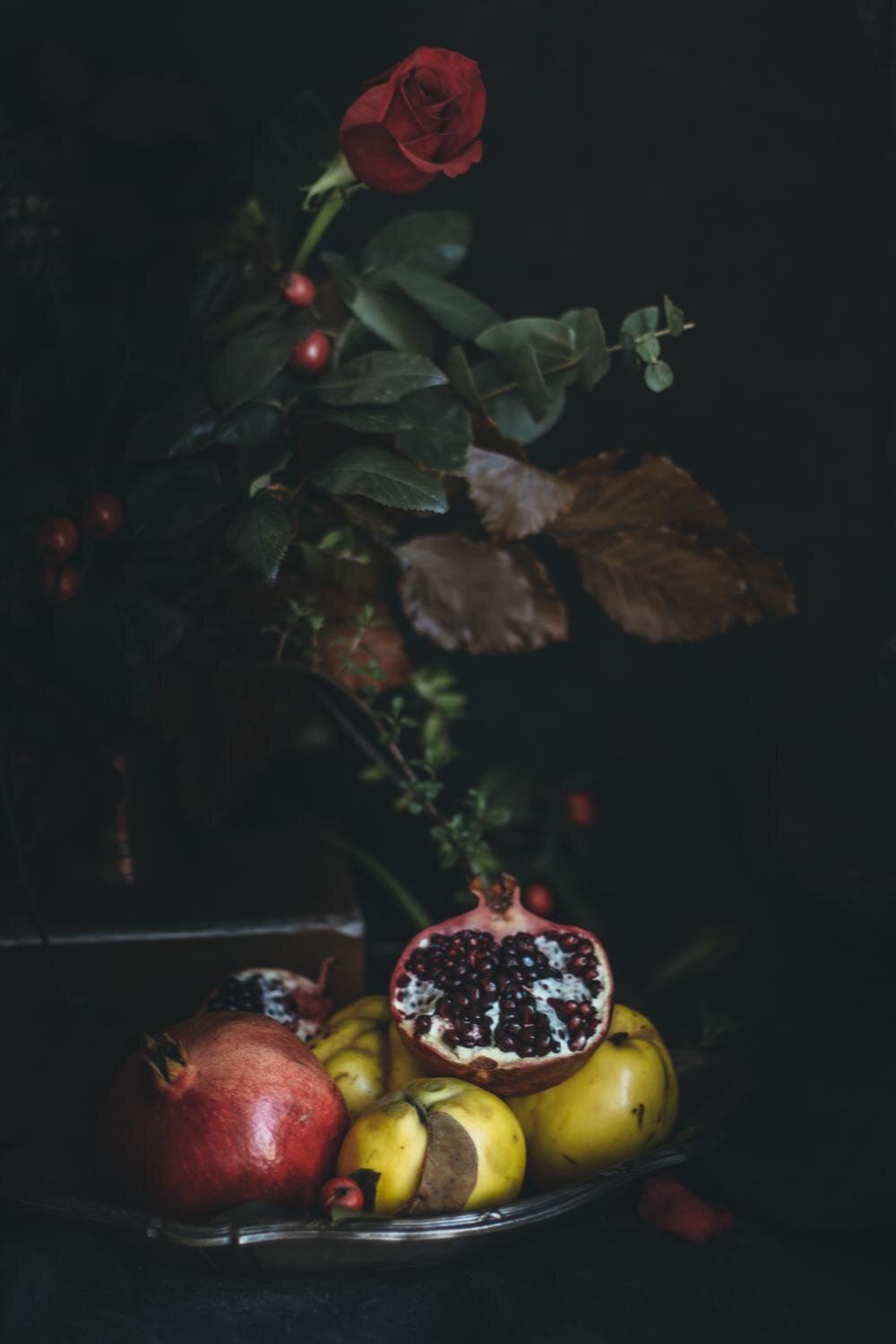Immigrant Food Stories: A Persian Quince Stew
Immigrant Food Stories, a Feast of Togetherness for Dark Days
It was a rainy Saturday night early in November. There was the smell of cardamom and butter in the air. Windows were condensated after hours of boiling rice and stewing meat. The speakers of Alice’s record player were connected to my phone, that played songs of which only I could understand the words. Others were distracted from the melodic tunes by the food and the conversation. Around a long table topped with pale rose, red Autumn leaves, quinces and pomegranates, there was a cheerful group of eight people who were chatting the cold, rainy night away. With a glass of Syrah in our hand, we were feasting on the colorful and aromatic dishes, in a company that was just as vibrant and stimulating.
We were from Iran, Italy, The US and Sweden, with some German background. The food was Persian, fragrant and seasonal. This was the Persian Autumn Dinner that I hosted at Latteria Studio, as a trial for my supper club. It was only a couple of days before the US election. And I could’ve never imagined that 3 months later when I finally wrote a recap of that evening, we would be standing where we stand now.
This post is a part of the Immigrant Food Stories; the contribute many fellow food bloggers are making against hate and fear of the other, particularly to Trump’s dumb and cruel muslim ban (that thanks to a healthy judiciary system, has been halted). I am touched by these people’s stories, and willingness to narrate how we are all similar at the end of the day. Make sure to check out the links below and to look for #ImmigrantFoodStories on instagram, twitter and facebook, and please share your own immigrant food stories too!
If you have followed Lab Noon for a while, you’d know that this whole blog is a long, ongoing immigrant food story. It’s the tale of my Iranian culinary heritagecombined with what I learn everyday from the spectacular food culture of Italy, where I immigrated a decade ago. What you might not know is another food story; the food stories of wars, the food stories of sanctions, the food stories of shortage, instead of abundance.
Bombs, Coupons and a Cookbook from “Rosa“
I was born in 1985, right in the middle of eight years of Iran-Iraq war. I still remember as if it was just yesterday when the bombing siren went off, and what I now associate as the most horrifying voice in the world, announced the beginning of the bombing and the minutes we had in order to run to shelters. As terrifying as the siren was, the running and hiding seemed like a big, collective game to us children. A game that our parents were often too concerned and worn out to play with us.
Food and other essentials were rationed during the war in Iran. A grocery coupon system was applied so that all families could have to them, without having to obtain their food and other goods from the black market (which was also very active). The aisles in the super markets were often half empty, and the queues in front of shops that sold with coupons were very long.
I had long forgotten about the grocery coupons and the long queues until some weeks ago, when I received a small, but heavy parcel from my mom. It was the two huge volumes of “The Art of Cooking” by Ms. Rosa Montazami, the bible of cooking in Iran. The book is a vast collection of Iranian and international savory and sweet recipes, so important that for decades it has been gifted to young brides to help them cook well in their new home.
My grandfather, splendidly in his mid 90s
Unfortunately, I couldn’t find much information about Ms.Montazami herself. All we know is that she started her famous cooking classes in Tehran during the sixties, and she collected her recipes in her famous cookbook. I am almost certain that she must have had a sort of culinary education in Europe, possibly in France. Her table setting etiquette is strictly formal and very much influenced by the European tradition. The footprints of the French cuisine are also visibly traceable in her recipes.
My mom swears by Rosa’s recipes, referring to her as an old friend, rather than a stranger author. After all, it’s through Rosa’s book that she started her baking adventures, and reaffirmed herself as an excellent home cook. My mom’s cookbook of Rosa, is only in one volume, worn out, and stained with flour, butter and saffron, just as great cookbooks should be. As a child I used to flip through its pages, looking for “pictures”; terrible food photography from the 70s, that seemed unworldly to me, yet very entertaining. Little did I know that during the war each family was allowed a single copy of Rosa Montazami’s cookbook with their necessities coupons. It was a necessity to have access to the best recipes.
In this past decade of immigration, Rosa’s recipes in my mom’s voice have been my guidance in cooking Persian dishes, whenever I couldn’t afford to make any mistakes. Such as my Persian Autumn Dinner, where apart from the modern recipes I developed specifically for the event, classics such as Khoresht-e Béh — quince stew — were cooked just as described in the famous cookbook.
Immigrant food stories often start long before the act of immigration, but they are always delicious, even miles and generations later.
More Immigrant Food Stories from Blogger Friends
Fix Feast Flair | Kale & Caramel | HonestlyYUM | Eat this Poem | My Darling Lemon Thyme | Floating Kitchen | The Year in Food | Brooklyn Supper | Taste Love and Nourish | Crepes of Wrath | Foolproof Living | Nourished Kitchen | Ful-Filled
Persian Quince Stew (Khoresh-e Béh)
Serves 6
This is a class Persian meat stew to be served with white rice. You can replace the quince with apples. Just remember that apples need less cooking time. The quince/apples should not fall apart after cooking. It should be firm but cooked.
Ingredients
500g | 1lb lamb or veel, boneless
1kg | 2lb Quince (or apples), (about 3 or 4 large fruits)
2 large onions, finely sliced
2 tsp turmeric powder
1tbsp fresh lemon juice
1 - 2tbsp sugar*
1tsp powdered saffron
100g | 1/3 cup oil
1 tsp butter (or oil)
Salt and pepper to taste
INSTRUCTIONS
Cut the meat into large chunks.
Heat the oil in a large, thick pot. Fry the onions on medium heat until translucent, well cooked and golden, about 15 minutes. Stir in the turmeric powder, when absorbed, turn up the heat and add the meat chunks. When the surface of meat has become light, add 2 - 3 cups of water. Bring to boil. Cover and cook until the meat is tender.
Peel and core the quince, slice in quarters. Rub half a lemon on the slices to avoid darkening.
Heat the butter (or oil) in a pan and slightly pan-fry the quince slices, just for the color to change. Not more than 5 or ten minutes.
Melt the saffron in 1 tsbp of hot water. Adjust the meat with salt, pepper and sugar and add the lemon juice and saffron infusione.
Carefully (and preferably with a kitchen tong) place the pieces of quince on top of meat, place the lid back and cook for 15 - 20 minutes more until the quince is cook but doesn't fall apart.
For serving, use the tong to put the quince aside, serve the meat and the sauce, and place the quince pieces back on.
Serve with Persian white rice (plov/pilaf).
NOTES
*depends on how sweet you like the stew.
Adapted from The Art of Cooking by Rosa Montazami
Tehran, Vali-asri and its famous trees. Mount Damavand in the background
